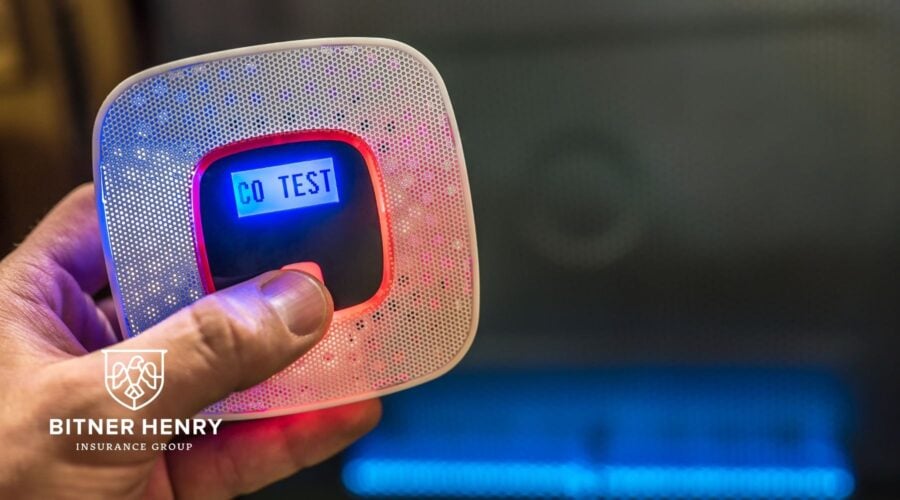
For student-athletes, practicing and competing in high temperatures creates significant risks to their health. Heat-related illnesses can develop and escalate quickly. That’s why it’s critical for school leaders to take proactive steps and have comprehensive policies and procedures that address this hazard.
This article outlines key strategies schools should implement to protect student-athletes from heat illnesses and build a culture of safety.
Heat Illness Education
Heat-related illnesses occur when the body is no longer able to regulate its temperature. These illnesses can become life-threatening quickly, especially during intense physical activity in hot and humid conditions.
To help prevent these situations, schools should educate athletes, coaches, and parents on the signs of heat illness. Informed coaches and parents can implement and support best practices to mitigate risks and address heat illness. Athletes are more likely to speak up when they feel unwell and look out for their teammates when they are aware of the warning signs of heat illness. By understanding heat illness, school communities can take proactive steps to mitigate heat-related hazards.
Heat Illness Symptoms and Risk Factors
It is essential to know when heat illnesses are occurring in order to appropriately respond to them. There are many signs and symptoms of heat illnesses, including:
- Muscle cramps
- Heavy sweating
- Headaches
- Shortness of breath or rapid, shallow breathing
- Dizziness or lightheadedness
- Blurred vision
- Weakness or fatigue
- Nausea or vomiting
- Cool, moist skin and goosebumps
- Swollen hands, feet or ankles
- A drop in blood pressure upon standing
Additionally, signs that a heat illness emergency (known as a heat stroke) is occurring include:
- High body temperature
- Hallucinations, confusion, agitation or aggression
- Slurred speech
- Seizures
- Fainting
- Change in sweating pattern (e.g., the inability to sweat or profuse sweating)
- Flushed skin
- Rapid breathing
- Rapid heart rate
It is critical to be aware of factors that can increase the risk of heat illnesses occurring. Environmental risk factors include high temperatures, poor air quality, elevated humidity, prolonged exposure to direct sunlight, and a lack of air flow. Individuals may have personal risk factors that make them more susceptible, such as underlying health conditions, a history of heat illness, lower fitness levels, dehydration, and excess body weight. Heavy clothing or equipment, strenuous exercise, certain medications, and alcohol use can also increase the risk of heat illness.
Heat Illness Prevention Strategies
School leaders, coaches, and athletic department staff can implement several prevention strategies to address heat illness risks:
- Conduct pre-participation screenings. Schools should require all student-athletes to complete a pre-participation physical exam. This should include a screening for sickle cell trait, which increases the risk of complications during intense exercise, especially in hot conditions or when the athlete is dehydrated.
- Acclimatize athletes to the heat. Student-athletes’ exposure to heat should be gradually increased over a period of 10-14 days. It should begin with shorter, lighter sessions that slowly build up in intensity and duration to allow their bodies to adapt.
- Modify practices or games. Practices should start slowly and gradually increase in pace. Activities should be scheduled to occur during cooler parts of the day, like early morning or evening, and in the shade when possible.
- Monitor athletes closely. Coaches and staff should watch for signs of heat illnesses.
- Ensure medical professionals are present. These individuals can help identify risky activities that impact health, diagnose heat illnesses, and provide care if a student-athlete begins showing symptoms of heat illness.
- Provide frequent rest breaks and hydrate. Student-athletes should take water breaks every 15-20 minutes in shaded and cool areas.
- Ensure athletes wear appropriate clothing and sunscreen. Athletes should wear breathable, lightweight clothing and change their clothing when it becomes wet. They should minimize gear and equipment like pads and helmets during high heat. Access to sunscreen should also be available.
- Keep response tools accessible. Ensure staff have essential tools on hand. These include a heat stress monitor, a core temperature thermometer, and a cold-water immersion tub. Staff should be trained to use all tools quickly, safely, and correctly.
- Provide cooling methods. Staff should use cold towels, fans, or misting stations during breaks. Have ice packs or cold-water immersion available for emergencies.
- Emphasize post-exercise recovery. Student-athletes should be encouraged to hydrate and cool down after activities to aid recovery. Light stretching and rest in a cool environment can help prevent lingering symptoms.
Emergency Preparedness
Schools should have an emergency action plan to ensure that student-athletes experiencing heat illness emergencies receive medical care as soon as possible. Coaches and staff should be trained on recognizing the signs of heat illness emergencies and the steps to take if one occurs, as quick and decisive action is vital.
In the event of an emergency, all activity should be immediately stopped, and the student-athlete should be moved to a shaded or air-conditioned area. Staff should call 911 if the athlete shows signs of heat stroke. While waiting for emergency services, excess clothing should be removed from the athlete and cooling techniques should be implemented (e.g., placing cold packs or wet towels on their neck, armpits and groin; fanning them; spraying them with mist; immersing them in cold water). If the athlete is conscious and able to swallow, staff should offer them small sips of cool water or a sports drink. Staff should also be ready to begin CPR. The athlete should not be left alone, and their condition should be monitored until help arrives.
Ensure Compliance and Instill a Culture of Safety
To further prevent heat illness, schools and athletic programs should be aware of and comply with applicable laws and regulations. They should also know and follow the rules and guidelines provided by interscholastic sport associations or similar governing bodies regarding heat and athletes. These include adhering to heat acclimatization protocols, environmental monitoring, emergency action plans, and having proper cooling equipment on-site.
Prioritizing student-athlete well-being above performance outcomes is paramount. Open communication, education on heat illness, and modeling responsible behavior help create an environment where athletes feel supported in reporting symptoms and taking breaks when needed. These activities not only protect student-athletes but also reduce legal liability for schools and staff.
Conclusion
Preventing heat illnesses in student-athletes is a team endeavor. Schools with leaders and staff who are proactive, provide education on heat illness symptoms, implement preventive measures, know how to appropriately respond to heat illnesses, and foster a culture of safety are better equipped to protect their student-athletes.
Read more about safety here.
Further Reading

The Danger of Misrepresentation in Sober Living Insurance
When establishing or operating a sober living home, the sheer volume of responsibilities can be overwhelming. From resident care to daily...

Protect Your Sanctuary From the “Silent Killer”
Carbon monoxide (CO) is a deadly, odorless, colorless, and invisible gas produced when fuels (like natural gas, propane, oil, wood, or gasoline) do...
